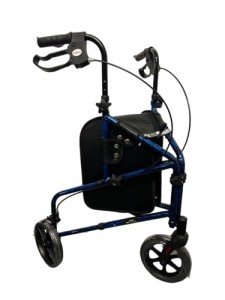
Understanding Mobility Aids: Enhancing Independence and Quality of Life
Mobility aids are essential tools that help people with physical disabilities or conditions that impede their capability to move easily. These aids not just promote self-reliance and improve quality of life however also supply safety and support for users in different environments. The landscape of mobility aids is broad, including a variety of devices customized to meet specific requirements. This article aims to check out the different types of mobility aids, their benefits, considerations for use, and often asked concerns.
Kinds Of Mobility Aids
Mobility aids can be categorized into several significant types, each developed to help in specific ways. Below is a table summing up the most common mobility aids:
| Type of Mobility Aid | Description | Perfect Use Case |
|---|---|---|
| Wheelchairs | A chair mounted on wheels used by those not able to stroll. | Long-lasting special needs or serious mobility problems. |
| Walkers | A frame that supplies assistance for people while walking. | Post-surgery healing or balance problems. |
| Walking canes | A stick used for balance and assistance while walking. | Moderate mobility concerns or as a preventive measure. |
| Rollators | A Senior Walker geared up Rollator With Wheels wheels and frequently a seat. | People requiring assistance over longer distances. |
| Crutches | Devices utilized to elevate and support the body weight of an individual with a leg injury. | Momentary injuries needing non-weight bearing. |
| Scooters | A motorized gadget for those who can sit however not walk fars away. | Long trips and fatigue-prone people. |
| Raise Chairs | Reclining chairs that raise to assist users in standing. | Elderly individuals or those with extreme pain. |
Benefits of Mobility Aids
The use of mobility aids extends beyond simple transportation; they serve numerous critical functions in enhancing the wellness of users:
- Independence: Mobility aids empower users to carry out daily activities without relying greatly on caretakers or support from others.
- Safety: Many mobility aids are designed to lessen the danger of falls, providing users with stability when moving.
- Improved Quality of Life: By improving mobility, individuals can engage in social activities, workout, and keep community connections, positively affecting their mental health.
- Access to Environments: Mobility aids can facilitate access to places that may otherwise be challenging to navigate, such as public transport and public spaces.
- Support Recovery: They play a vital role in rehabilitation following surgical treatment or injury by promoting progressive mobility and aiding recovery.
Factors to consider for Choosing the Right Mobility Aid
Picking the suitable mobility aid can substantially influence an individual's quality of life. Here are several crucial considerations to remember:
- Level of Mobility Impairment: Assess the intensity of mobility problems to figure out the most appropriate kind of aid.
- User's Physical Condition: Consider elements like weight, strength, and total health.
- User's Lifestyle and Environment: Analyze where the mobility aid will be used most typically: inside your home, outdoors, or both.
- Practical Needs: Evaluate if additional features such as storage, seating, or height modifications are necessary.
- Consultation with Professionals: Always seek advice from health care professionals for guidance customized to specific situations.
Often Asked Questions (FAQs)
Q1: What is the difference between a walker and a KMINA 2-in-1 Rollator Wheelchair Hybrid - Blue?A1: A OasisSpace 3-Wheel Foldable Walker - Easy Mobility is a simple frameutilized for support and balance, while a Rollator For Seniors has wheels, providing easier mobility and typically comes with additional features such as a seat and storage. Q2: Can mobility aids be covered by insurance?A2:
Many health insurance plans, including Medicare, may cover mobility aids if they are considered medically essential. It is advisable to consult with your insurance coverage provider for specific information. Q3: How do I know when it's time to use a mobility aid?A3: If you've experienced frequent falls, persistent pain
while walking, or have trouble finishing daily activities
, it may be time to think about a mobility aid. Speak with a healthcare expert for customized recommendations. Q4: Are there mobility aids designed for outdoor use?A4: Yes, many mobility aids are particularly designed for outdoor environments, including scooters, outdoor walkers, and all-terrain wheelchairs, equipped to manage numerous terrains. Q5: Can I use a mobility aid after surgery, like knee replacement?A5: Yes, mobility aids such as walkers and crutches are commonly advised post-surgery to aid recovery and keep safety as you restore
strength. Mobility aids play an invaluable role in supporting individuals with mobilitydifficulties, helping with self-reliance, and enhancing general quality of life. With a varied variety of alternatives readily available, it's essential for users to assess their special needs and seek advice from professionals to select the most appropriate aid. As innovation and design continue to evolve, these aids will undoubtedly end up being a lot more user-friendly and efficient, promoting a more inclusive world for everybody. By understanding the various kinds of mobility aids and their particular benefits, Mymobilityscooters.uk people can make educated options that enhance their mobility and facilitate a more active and fulfilling lifestyle.
